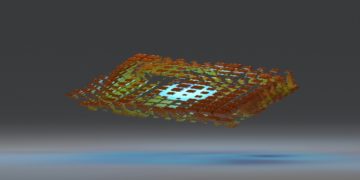When Lewis Carroll released one particular novel in 1865. It was immediately described as nonsense, but it turned out to be such important nonsense that its themes would morph into their own genre – nonsense literature.
His Wonderland is a hallucinatory world that doesn’t make sense, with creatures and people straight out of a dream. Now 160 years old, it has been adapted in tens of different ways, as games, movies, and even for the stage.
Technology moves, and with it, Carroll’s Wonderland stories ripen for new portrayals. It’s now the plaything of computers and AI, known for their similarly strange take on reality. Let’s talk about A.I. Wonderland.
American McGee
The world of Wonderland has met with computers before. The sadly stalled video game franchise from American McGee consists of American McGee’s Alice (2000) and Alice: Madness Returns (2011). MeGee retired from the gaming industry after publisher EA decided not to pursue a third instalment, Alice: Asylum.
Another fairytale title, Oz: Adventures, also ended up in the bin. The good news is that both stories are in the public domain.
Wonderland lives on in 9 Mad Hats: Absolootly Mad, a five-reel slot machine on the JackpotCity website. It features a golden representation of the Mad Hatter. The work of L. Frank Baum – The Wonderful Wizard of Oz – continues in Sisters of Oz, another five-reel game among the jackpot slots.
Fairytales and other public domain stories regularly serve as inspiration for casino games. Another is Sherlock and Moriarty (originally) from the mind of Sir Arthur Conan Doyle.
A.I. Wonderland
A.I. Wonderland takes things in a different direction altogether. Described as a feature-length “immersive experience”, A.I. Wonderland seems like a standard digital reimaging at first glance.
It’s made by a stable of AI artists and has the telltale ‘soft around the edges’ look of AI artwork. That kind of eerie, unreal appearance arguably enhances Lewis Carroll’s creatures. Nobody has ever quite worked out if what’s happening in his novel is real or not.
What makes A.I. Wonderland different from other digital projects (or even mainline cinema) is its interactivity. The production pulls “select VIP” people from the audience to star in the film. The person’s likeness is then scanned onto characters in A.I. Wonderland.
While this technology isn’t brand new, it represents a possible future of entertainment, in which even movies can be personalised to the viewer’s tastes.
“One Too Many Fingers”
The makers of A.I. Wonderland do have experience in what they’re doing. A previous project, our T2 Remake, is described as a parody of Terminator 2, the 1991 sci-fi from director-turned-ocean explorer James Cameron.
This time, Storyblocker Studios stepped into the big shoes. Our T2 Remake aimed to prove that AI filmmaking doesn’t lack artistry.Industry-scale AI filmmaking is still a long way from reality. The very first movie made entirely in AI, Next Stop Paris, “predictably” contained “one too many fingers”, to quote PetaPixel, and wound up more accidental comedy than the romance it was supposed to be. Still, early experiments like A.I. Wonderland look promising for fans of the niche.
David Prior
David Prior is the editor of Today News, responsible for the overall editorial strategy. He is an NCTJ-qualified journalist with over 20 years’ experience, and is also editor of the award-winning hyperlocal news title Altrincham Today. His LinkedIn profile is here.











































































